5 Key Features to Look for When Choosing Trail Running Shoes
Trail running is an exciting way to explore the outdoors, but the wrong shoes can easily break your experience. This blog post outlines five essential features to consider to help you find the right pair of trail shoes for any trail challenge. Whether your thing is navigating steep terrain or tackling long distances, these tips will ensure you're prepared for whatever comes your way during your adventure on the trails!
Traction
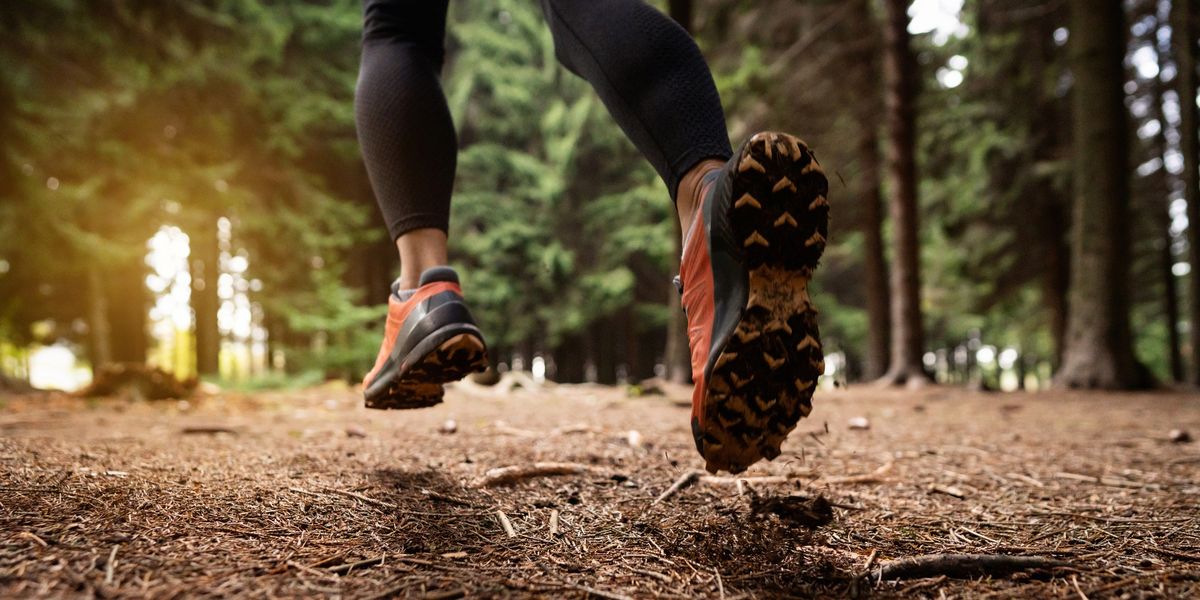
Trail running often involves running on rough and uneven terrain, including mud, rocks, and loose gravel. Without proper traction runners may slip or lose their footing, potentially leading to injuries. Additionally, good traction allows runners to maintain their speed and momentum on uphill climbs and steep descents.
So, when considering tread, you should pay attention to lug depth, placement, and direction.
For those who don’t know, lugs are essentially small rubber protrusions on the bottom of a shoe responsible for traction on different surfaces. Deeper lugs offer a better grip on loose soil or muddy terrain, while shallower lugs are better suited for hard-packed trails. Mind, however, that deeper lugs can also add weight to the shoe, which may be a deal breaker to some athletes.
The direction of the lugs can also impact effectiveness. Some shoes have multidirectional lugs for greater stability on changing, uneven terrain. Others have lugs oriented primarily in one direction, which can be beneficial for maintaining forward momentum during uphill climbs. The best shoes with multidirectional lugs available at RunUnited include the Altra Lone Peak 6, the inov-8 X-Talon 255 V2, and the Topo Athletic Terraventure 3.
Also, consider the placement of lugs. For smooth surfaces, opt for lugs placed close together, while if you're dealing with mud or soft terrain, wider spacing is best suited to give a better grip.
Protection
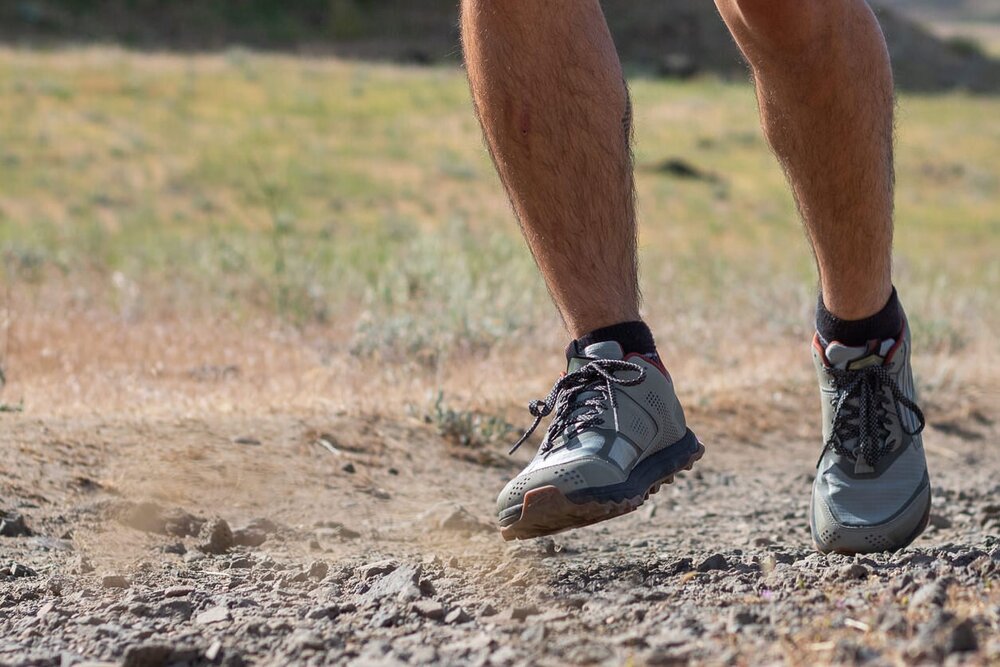
Protective features are essential for trail running shoes because they help prevent injuries and keep runners safe on unpredictable terrain. Sharp rocks, roots, and other obstacles can cause serious damage to unprotected feet, leading to cuts, bruises, or even more severe injuries. That’s why you should look for toe caps and shanks.
Toe caps are usually made from durable rubber or thermoplastic polyurethane (TPU). Both provide excellent protection against sharp objects on the trail, but TPU toe caps tend to be lighter in weight.
Now, rock plates. If you're looking for more flexibility over protection, you need trail runners with forefoot rock plates. Full-length rock plates, in their turn, will offer superior protection.
Consider the inov-8 Roclite G 315 GTX V2 or the inov-8 TrailFly Ultra G 300 Max, as these offer the best shank technology.
Cushioning & Drop
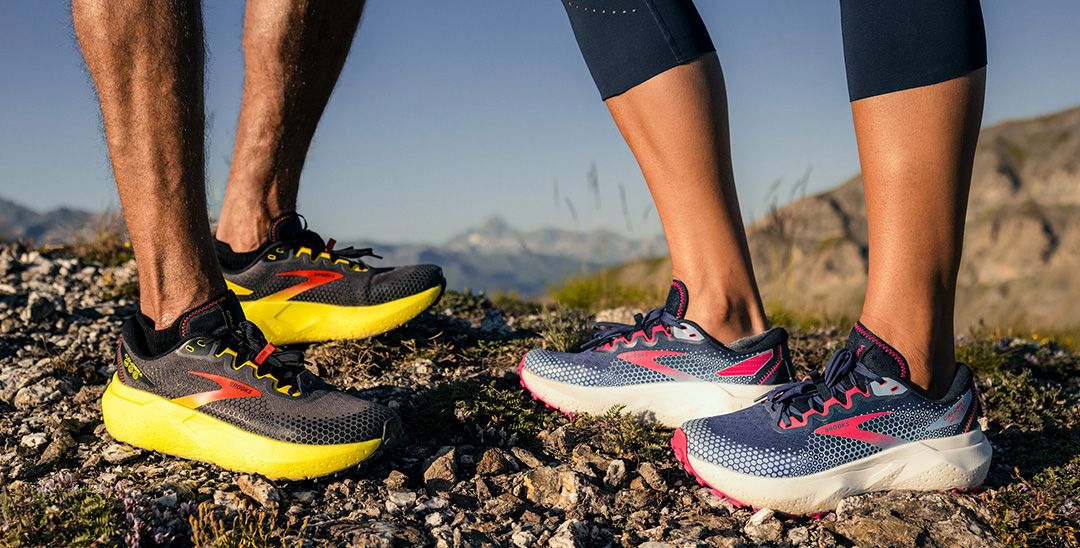
The amount of cushioning you need in your trail running shoe depends on several factors, including the type of terrain you'll be running on, the length of your run, and, of course, your personal preference.
Generally, less cushioned shoes are better suited for shorter-distance runs and well-maintained trails with minimal obstacles or rough terrain. They provide a more natural feel but may not offer enough protection on technical terrain. More heavily cushioned shoes are better suited for technical terrain that requires additional protection against sharp objects.
On the extremes, there are minimalist shoes, hyped in the 2000s, and maximalist trail runners.
Minimalist shoes, also known as barefoot shoes, were designed to mimic the experience of running barefoot while still providing some protection against rough terrain. These shoes typically have no cushioning, a low or zero heel-to-toe drop, and a flexible sole, allowing for natural foot movement. They are often favored by runners who prioritize speed and efficiency over comfort.
Maximalist shoes were introduced in the 2010s as a response to the minimalist shoe trend. These shoes feature maximum cushioning and support and have thick soles. That’s why they are preferred by runners who prioritize comfort and protection over speed and especially high-mile runers.
Both barefoot and maximum cushioning shoes have their disadvantages. Minimalist shoes may be too hard on joints, while maximalist shoes may feel mushy to some runners.
Another way to choose trail shoes is by heel-to-toe drop, simply called drop.
The term refers to the difference in height between the heel and forefoot of the shoe. A standard drop of 10-12mm is suitable for heel strikers, as it provides additional cushioning and shock absorption. A moderate drop of 5-10mm is ideal for midfoot strikers, as it allows for a more natural foot position while still providing some cushioning. Runners who prefer a low drop of 0-4mm usually have a forefoot or midfoot strike and opt for more minimalist designs. However, be mindful that low-drop shoes can increase stress on the Achilles tendon.
Some of the best maximalist trail shoes are the Hoka Mafate Speed 4 and the Saucony Ride 15 TR. If you want the best minimalist design, consider the Saucony Carrera XC4.
Waterproofing
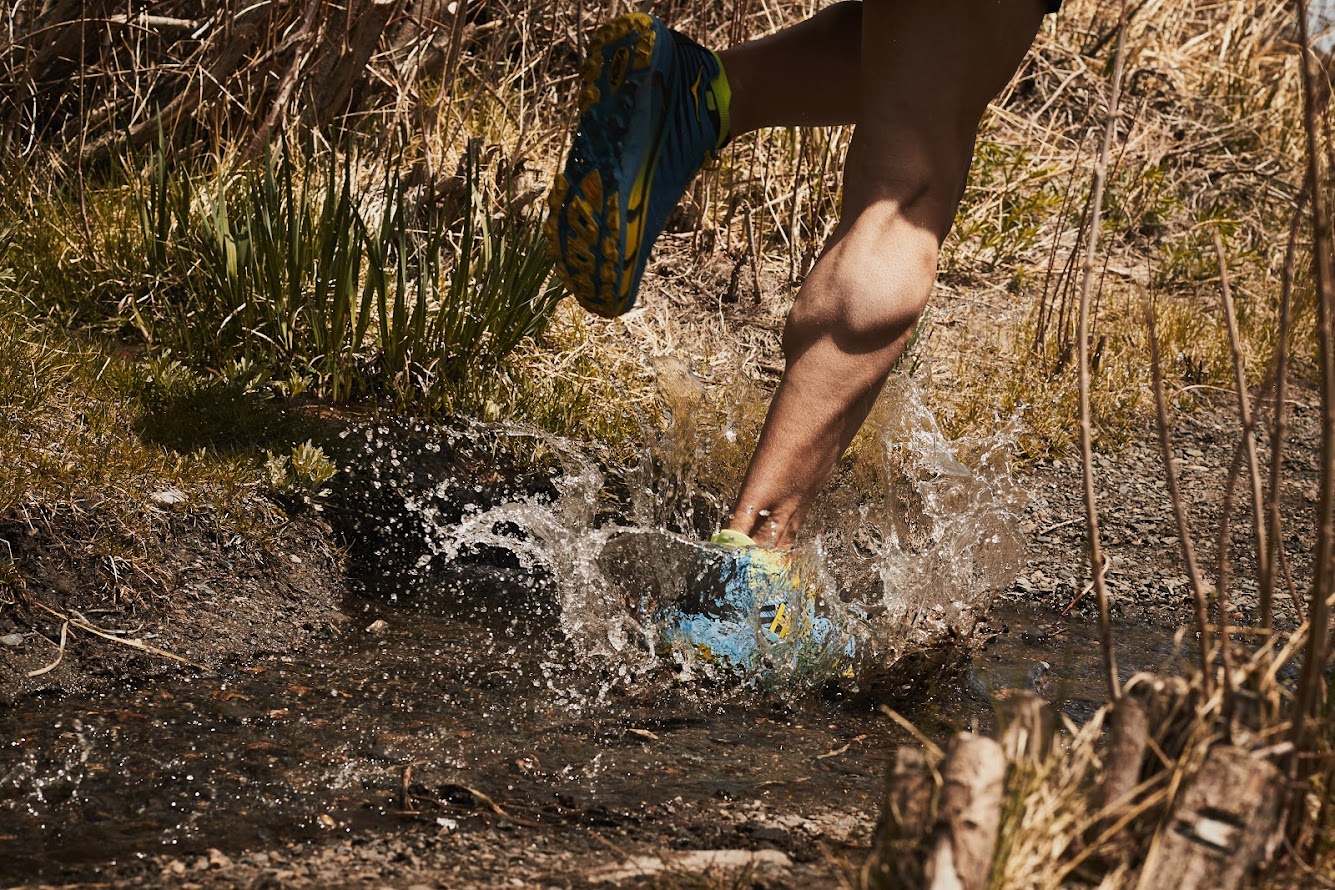
Waterproof trail running shoes use special membranes like Gore-Tex or DWR coatings that prevent water from penetrating the shoe's upper.
Though waterproofing can be a desirable feature, there are some trade-offs. First and foremost, waterproof trail shoes tend to be less breathable than their mesh counterparts. It means that your feet may become hot and sweaty during long runs, which can lead to discomfort and blisters. Additionally, waterproof shoes are often heavier than mesh shoes due to the added materials used in their construction.
So when should you choose waterproof shoes over mesh shoes? If you frequently encounter wet or muddy conditions on your runs, a pair of waterproof trail running shoes, such as the Saucony Peregrine 13 GTX or the Hoka Challenger ATR 6 GTX, will be a good investment.Waterproof shoes are also a good choice if you plan to do any stream crossings during your runs. In other cases, waterproofing is overkill. Lightweight mesh shoes would be better for mild weather conditions and dry trails. Even if you occasionally encounter gentle rain, mesh shoes are better because they dry very quickly.
Fit
Finding the proper fit is especially important for trail running shoes because they need to provide adequate support on uneven terrain, which is a whole other task compared to road running. If your shoes are too loose or too tight, you risk developing blisters, hot spots, or other foot injuries that can sideline you from your favorite activity.
So, how do find the right trail running shoe fit? You should start by measuring the length and width of both feet. Yes, width as well. Some brands offer different shoe widths in addition to their standard sizes. So If you have feet wider or narrower than average, choosing a shoe with a wide or narrow width will be great for your overall comfort. Once you have both measurements, consult the shoe manufacturer's sizing chart.
In addition to finding the right size and width, it's essential to check for proper heel and arch support in your trail running shoes.
To check heel support, ensure your heel is snugly held in place without slipping or rubbing against the back of the shoe. It will ensure your foot stays securely in place during runs.
For arch support, look for shoes with built-in arch support or inserts that can be added as needed. It will help prevent overpronation (inward rolling of the foot) and reduce stress on the plantar fascia (the tissue that runs along the bottom of the foot).
Types of Trail Running Shoes
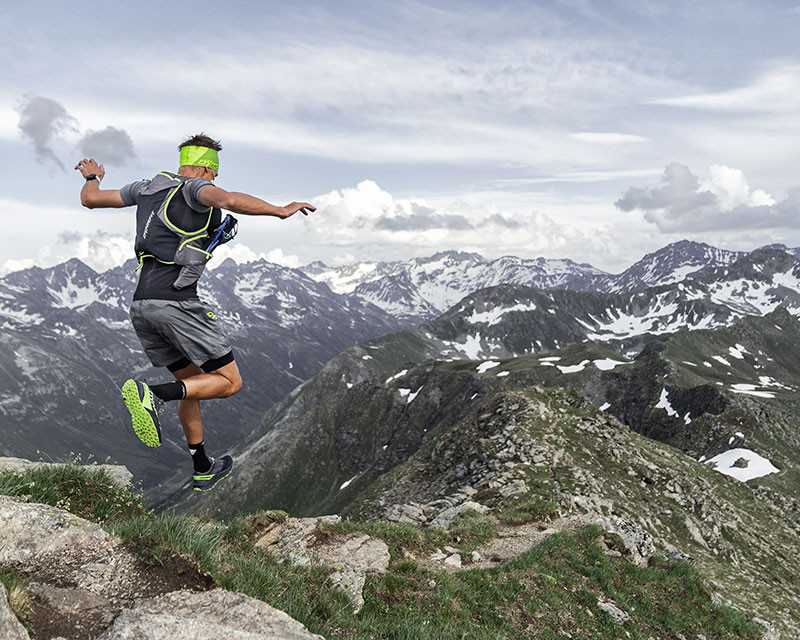
Now, we're going to provide the three types of trail runners and explain how exactly the mentioned features are mixed in each one.
Light Trail Running Shoes
Light trail shoes are designed for well-maintained trails with minimal obstacles or technical terrain. These shoes offer moderate protection and cushioning with a focus on comfort and speed. Traction is still important in these shoes but not as crucial as in other types. Light trail running shoes are usually lightweight with breathable uppers to keep feet cool during long runs.
Rugged Trail Running Shoes
Rugged trail running shoes are built to handle technical terrain, steep inclines, rocky surfaces, and unpredictable weather conditions. They offer excellent traction with aggressive outsoles made from materials like Vibram rubber. The uppers may feature reinforced overlays made from Kevlar or TPU to provide extra durability and protection against abrasion. Rugged trail running shoes also typically have ample cushioning for shock absorption during high-impact activities.
Off-Trail Running Shoes
Off-trail running shoes are designed for the most extreme environments with no defined trails or paths. These shoes are built tough with waterproof membranes like Gore-Tex to keep feet dry while crossing streams or wetlands. They have a more robust construction than other trail shoe designs and put a greater emphasis on support, stability, and protection against sharp rocks or debris.
Conclusion
Now you know exactly what features your perfect trail shoes should have for the best performance. So go explore RunUnited’s selection of the best trail runners for men and women's trail shoes and make your purchase.
And don’t forget that the terrain you'll be running on and your personal preferences matter most because no one knows what's right for you except yourself. Listen to your heart, and don’t follow trends mindlessly.
FAQ
Can I use regular running shoes for trail running?
No, regular running shoes lack protection and traction on rugged terrain.
How often should I replace my trail running shoes?
It depends on how often you run and the condition of your shoes. Generally, it's recommended to replace them every 300-500 miles or when the tread wears down.
Do I need waterproof trail running shoes?
It depends on the climate and terrain you'll be running in. If you frequently encounter wet conditions, waterproof shoes can help keep your feet dry and prevent blisters.
How do I know if a shoe has good traction?
Shoes with rubber soles and deep lugs provide a good grip on various surfaces, such as rocks, mud, and loose gravel.
EXPLORE POPULAR ARTICLES
-
Why Running Socks Are Actually the Best Gift for Runners
Dec 24th 2025Giving socks as a gift usually feels… safe. Boring, even. It’s the backup plan when you don’t know w
-
Join Our X-Mas Blind Box Shenanigans
Dec 22nd 2025Remember that feeling? Sitting on the floor, shaking a wrapped box, trying to guess what’s inside? T
-
Run Bright, Stay in Sight: Reflective Gear for Night Running
Dec 10th 2025When winter comes, the days get shorter, and the sun sets before we’re done with our day. If you’re





